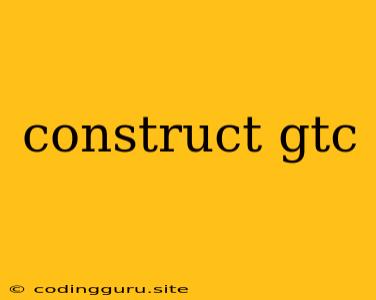Constructing a Generative Textual Corpus (GTC)
Building a Generative Textual Corpus (GTC) is a crucial step in various Natural Language Processing (NLP) tasks, including language modeling, text generation, and machine translation. This article aims to guide you through the process of constructing a GTC from scratch, focusing on the fundamental principles and practical considerations.
Why Do We Need a Generative Textual Corpus (GTC)?
A GTC serves as the foundation for training language models. It provides the necessary data for algorithms to learn patterns, relationships, and structures within language. In essence, a GTC enables machines to understand and generate human-like text.
What Makes a Good Generative Textual Corpus (GTC)?
1. Size and Diversity: A GTC should be large and diverse to capture the vast complexity of human language. It should include a variety of text types, domains, and writing styles.
2. Quality: The data within a GTC should be clean, accurate, and free from errors. Any inconsistencies or inaccuracies can negatively impact model performance.
3. Relevance: The data should be relevant to the specific NLP task at hand. For example, a GTC for machine translation would focus on parallel corpora of multiple languages.
Steps Involved in Constructing a Generative Textual Corpus (GTC)
1. Data Collection: This involves gathering textual data from various sources. Some common sources include:
* **Web Scraping:** Extracting text from websites using web crawling techniques.
* **Public Datasets:** Utilizing freely available datasets from research institutions and government agencies.
* **Domain-Specific Corpora:** Accessing specialized corpora for specific industries or domains.
* **Social Media Data:** Gathering text from platforms like Twitter, Facebook, and Reddit.
* **Books and Articles:** Obtaining text from digitized books, journals, and newspapers.
2. Data Preprocessing: Once the data is collected, it needs to be preprocessed to prepare it for training. This involves:
* **Cleaning:** Removing irrelevant characters, special symbols, and noise.
* **Tokenization:** Breaking down the text into individual words or units.
* **Normalization:** Converting text to a consistent format, such as lowercase or stemming.
* **Annotation:** Adding labels or metadata to the data, such as part-of-speech tags or sentiment information.
3. Data Filtering and Selection: This step aims to ensure the quality and relevance of the data. You may need to:
* **Remove duplicate data:** Eliminate redundant entries to prevent bias in the model.
* **Filter by domain or topic:** Select data relevant to your specific NLP task.
* **Remove irrelevant or low-quality data:** Eliminate text that is not informative or contains errors.
4. Data Formatting: The final step involves organizing the data into a format suitable for training. This may include:
* **Text files:** Storing the data in plain text files, possibly separated by category or domain.
* **Database:** Using a database to store and manage the data efficiently.
* **Specialized formats:** Utilizing formats designed for NLP, such as JSON or XML.
Examples of Generative Textual Corpora (GTC)
- Gutenberg Corpus: A collection of over 50,000 digitized books.
- Wikipedia Corpus: A massive text corpus derived from Wikipedia articles.
- Common Crawl: A publicly available web crawl dataset containing billions of web pages.
- Google Books Corpus: A collection of digitized books from Google Books.
Tips for Building a High-Quality Generative Textual Corpus (GTC)
- Start with a clear goal: Define the specific NLP task and target audience for your GTC.
- Use multiple data sources: Diversify your data to improve the model's generalization ability.
- Pay attention to data quality: Ensure that the data is accurate, consistent, and relevant.
- Preprocess the data thoroughly: Clean, tokenize, and normalize the data before training.
- Evaluate the corpus: Test the quality of your GTC using metrics like vocabulary size and perplexity.
Conclusion
Constructing a Generative Textual Corpus (GTC) is a crucial step in training language models for various NLP tasks. By following the steps outlined above and considering the tips provided, you can create a high-quality GTC that will enable your models to perform effectively. Remember, the quality and diversity of your GTC will directly influence the performance of your NLP models.
